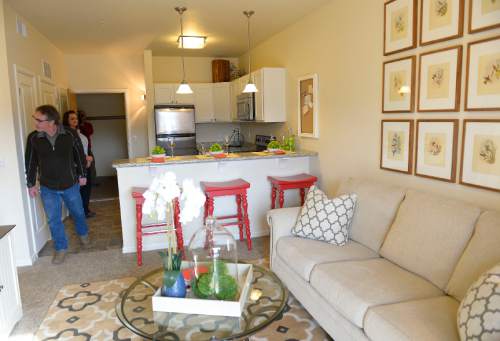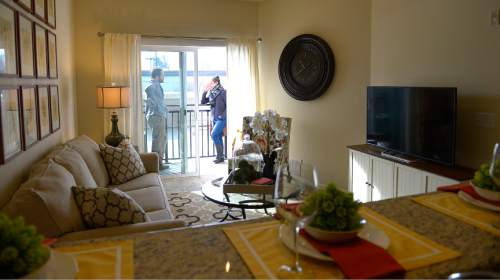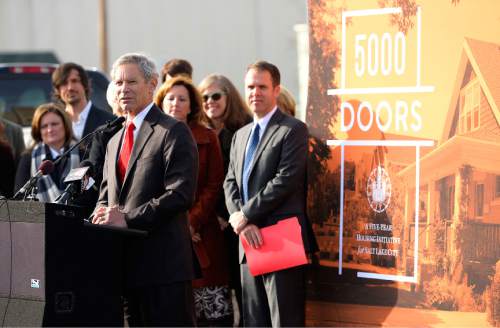This is an archived article that was published on sltrib.com in 2015, and information in the article may be outdated. It is provided only for personal research purposes and may not be reprinted.
There is a startling dearth of affordable housing in Salt Lake City, where many low-income families spend half their wages just to keep a roof over their heads.
Thursday, Mayor Ralph Becker unveiled his "5000 Doors" initiative that seeks to build 5,000 units of affordable housing over the next five years.
"We are working to establish a more livable city. Affordable housing is a key to that," the mayor said. "We want to ensure Salt Lake City is a place where everyone can have an affordable place to live."
To make that happen, Salt Lake City is offering incentives of various kinds to developers, that range from federal tax credits to low-interest loans to impact-fee waivers.
Presently, Salt Lake City does not demand that apartment and condominium developers set aside a percentage of their projects for affordable housing. As an example, the building boom along 400 South comprises mostly market-rate units.
"At the heart of what we do, it comes down to folks coming together, getting creative and finding solutions," Becker said.
Dan Lofgren of Cowboy Partners just finished building the 171-unit Liberty Village at 2150 S. McClelland Street in the heart of Sugar House. It has 35 "affordable" units that are available to families that make less than $34,000 annually, or individuals who earn less than $24,000.
A one-bedroom "affordable" apartment there rents for $644 per month including utilities.
"We think it's the right thing to do," Lofgren said. "The notion is, do well by doing right."
Those units, which are identical to market-priced apartments at Liberty Village, were built for such people as firefighters, teachers and baristas, Lofgren said.
"There is a temptation to think of affordable housing as something for people who can't make their way," he said. "Nothing could be further from the truth. These people work and drive the economy."
Among the challenges is that housing costs have increased faster than wages, said Mike Akerlow, the city's director of housing and neighborhood development. From 2000 to 2013, the median rent increased by 33 percent, while renter incomes went up only 21 percent, he said.
As a general rule, families should not spend more than 25 to 30 percent of their income on housing. But Akerlow noted that one-fourth of Salt Lake City families spend more than 50 percent of their income on rent. That's money that does not go to food, childcare, healthcare, transportation and education.
The average cost of a house in Salt Lake City is $271,000, according to Akerlow. The average monthly rent is $842.
But some 20 percent of Salt Lake City residents live in poverty. For single-mother families, the poverty rate is 38.7 percent. (The federal poverty threshold is $23,850 for a family of four.)
Those numbers add urgency to creating more affordable housing.
The Becker administration will now take its 5000 Doors initiative to the City Council to develop policy measures that will provide additional tools to develop affordable housing.
Whether the council has the political will to push for mandated affordable housing in large developments is unclear, said Councilwoman Erin Mendenhall. The council, however, does appear ready to embrace Becker's initiative that focuses on incentives for private-sector development.
Affordable housing should be built throughout Salt Lake City, Mendenhall said. And she warned that neither developers nor advocates should target west-side neighborhoods that already have plenty of affordable housing.













